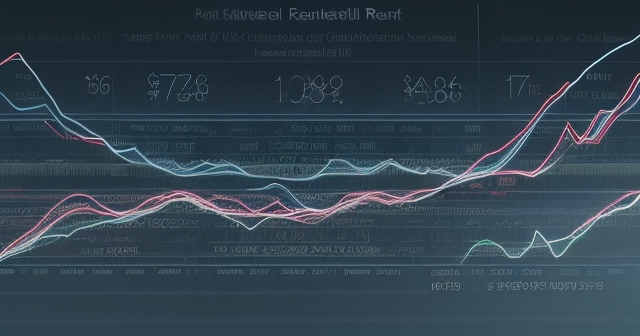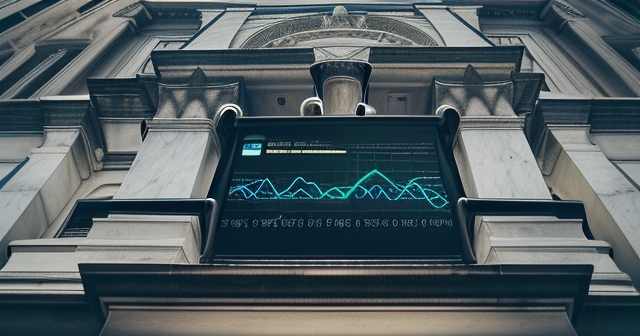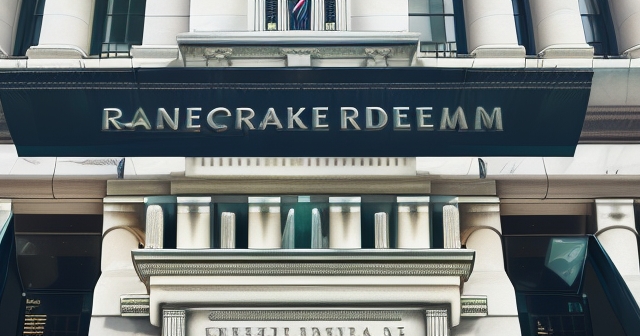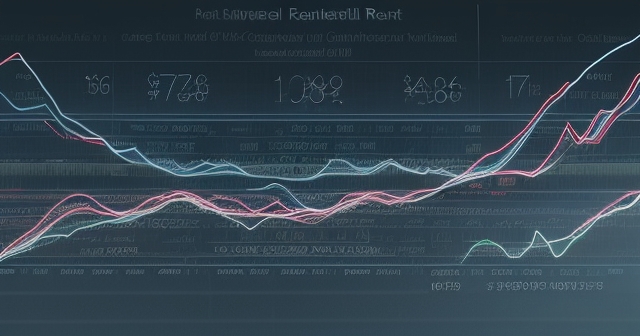Navigating the Currents of Capital: An In-Depth Look at Open Market Operations
Welcome, fellow navigators of the financial seas. As we chart our course through the complex world of investing and trading, it’s crucial to understand the powerful forces that influence market tides. One of the most significant of these forces, and perhaps the least understood by newcomers, emanates directly from the central bank’s toolkit: Open Market Operations (OMOs).
Think of the economy as a vast, intricate network of rivers and reservoirs, where money is the vital water flow. The central bank, like a skilled hydrologist, needs to manage this flow to keep the system healthy – preventing droughts (recessions) and floods (inflation). Open Market Operations are their primary levers for controlling the water level and the speed of the current.
In this exploration, we will demystify OMOs, breaking down how they work, why they matter, and how they ripple through the financial system, ultimately affecting everything from the interest rate on your mortgage to the potential direction of currency markets. Prepare to gain a foundational understanding of a concept that is central to modern monetary policy.

Every major economy has a central bank. In the United States, it’s the Federal Reserve, often simply called “the Fed.” The Fed has a critical mandate, tasked by Congress with promoting maximum employment, stable prices (controlling inflation), and moderate long-term interest rates. To achieve these broad goals, the Fed employs several tools, collectively known as monetary policy instruments.
The classic trio of these tools are:
- Reserve Requirements: The percentage of deposits that banks must hold in reserve and cannot lend out. Changes here are powerful but infrequently used due to their disruptive impact on bank operations.
- The Discount Rate: The interest rate at which commercial banks can borrow money directly from the Fed (the discount window). This acts more as a backstop or emergency source of funds and is typically set above market rates.
- Open Market Operations (OMOs): The buying and selling of government securities (like Treasury bonds) in the open market. This is the Fed’s most frequently used, flexible, and precise tool for influencing the money supply and, consequently, short-term interest rates.
While reserve requirements and the discount rate are important, OMOs are the workhorse of monetary policy, used almost daily to nudge the financial system towards the Fed’s desired state. They allow the Fed to make relatively small adjustments or massive interventions, depending on the economic conditions.
Below is a summary of the differences between the three main tools used by the Federal Reserve:
| Tool | Description | Frequency of Use |
|---|---|---|
| Reserve Requirements | Percentage of deposits banks must hold in reserve. | Infrequent |
| Discount Rate | Interest rate for banks borrowing directly from the Fed. | Occasional |
| Open Market Operations | Buying and selling government securities in the market. | Frequent |
Let’s dive into the core action. When the Federal Reserve wants to increase the money supply and lower interest rates – a move typically associated with stimulating economic activity – it engages in Open Market Purchases. How does this work?
Imagine the Fed identifies commercial banks or primary dealers (firms authorized to trade directly with the Fed) that hold U.S. government securities. The Fed approaches these institutions and offers to buy a certain amount of these securities from them.

When a bank sells a security to the Fed, the Fed pays for it. But where does the money come from? This is a crucial point: the Fed doesn’t use money it has taxed or borrowed. It essentially creates new money (in the form of digital credits) and adds it to the reserve accounts that commercial banks are required to hold at the Fed. It’s like the Fed is writing a check drawn on an account that can never run out.
So, the bank gives up a government security (an asset) and receives an equivalent value in reserves (another asset, but one that fuels lending). For the banking system as a whole, the total amount of reserves increases. These increased reserves mean banks have more funds available beyond their reserve requirements. They have more money sitting idle at the Fed or available to lend out. What happens when the supply of something increases? Its price tends to fall.
The “price” of these reserves is the interest rate at which banks lend them to each other overnight – the Federal Funds Rate. With more reserves sloshing around, banks are less desperate to borrow and more willing to lend them out, leading to a decrease in the Federal Funds Rate. This injection of liquidity flows from the banks into the broader economy as they make new loans or investments.
Think of it like flooding the market with a commodity. If there’s suddenly a massive surplus of oil, the price of oil drops. Similarly, if there’s a massive surplus of bank reserves, the “price” of borrowing those reserves (the Federal Funds Rate) drops. This is the direct mechanism by which buying securities makes money cheaper and more available.

Conversely, when the Federal Reserve wants to decrease the money supply and raise interest rates – a move typically associated with cooling down an overheating economy or combating inflation – it engages in Open Market Sales. This process is the mirror image of a purchase.
In this scenario, the Fed offers to sell government securities from its own holdings to commercial banks and primary dealers. The banks that buy these securities pay the Fed for them. How do they pay? By using funds from their reserve accounts held at the Fed.
When a bank buys a security from the Fed, its reserve balance at the Fed is debited. The bank gives up reserves (which could have been lent out) and receives a government security (an asset that is less liquid than reserves). For the banking system as a whole, the total amount of reserves decreases. Banks have less money sitting idle at the Fed and less capacity for new lending, at least based on their reserve levels.
Now, what happens when the supply of something decreases? Its price tends to rise. With fewer reserves available in the system, banks are more eager to hold onto what they have and less willing to lend them to other banks overnight. Banks that need reserves to meet their requirements or clear transactions face higher demand for the limited supply. This scarcity drives up the interest rate they charge each other for overnight borrowing – the Federal Funds Rate.
This withdrawal of liquidity makes money more expensive and less available. Banks may become more selective about who they lend to, and the overall volume of lending tends to contract or slow down. It’s like draining the market of a commodity; scarcity increases its price. Selling securities drains reserves, making the Federal Funds Rate rise.
So, through the simple act of buying or selling existing government securities, the Fed can directly manipulate the amount of reserves in the banking system, which in turn dictates the availability and cost of overnight lending between banks, targeting the crucial Federal Funds Rate.
We’ve touched upon it, but let’s dedicate a moment to the central impact point: bank reserves and the Federal Funds Rate. Understanding this connection is key to grasping why OMOs are so potent.
Commercial banks are the bedrock of the financial system, facilitating transactions and credit creation. They hold accounts at the Federal Reserve, and the balances in these accounts are their reserves. These reserves are critical for meeting regulatory requirements (though less so in the post-crisis “ample reserves” environment, which we’ll discuss), clearing payments between banks, and providing a pool of funds that can be lent out.
The Federal Funds Rate is the target rate set by the Federal Open Market Committee (FOMC) for overnight lending of these reserves between depository institutions. It’s not a rate the Fed charges banks directly (that’s the discount rate), but rather a rate that banks charge each other. However, the Fed heavily influences this rate through OMOs.
When the Fed buys securities, it adds reserves to the system. Banks find themselves with excess reserves they aren’t earning much on. Their incentive is to lend these excess reserves to other banks that might be short, even if the interest rate (the Federal Funds Rate) they receive is relatively low. The increased supply of lendable reserves pushes the Federal Funds Rate down, towards the FOMC’s lower target.
Conversely, when the Fed sells securities, it drains reserves from the system. Banks have fewer reserves, and some might fall short of their desired levels. To obtain the necessary reserves, they must borrow from other banks. With less supply of reserves available, the competition to borrow drives the Federal Funds Rate up, towards the FOMC’s upper target.
This manipulation of the Federal Funds Rate is paramount because it serves as a benchmark for a vast array of other interest rates throughout the economy. Prime rates for corporate loans, interest rates on credit cards, car loans, and especially mortgages are all indirectly influenced by changes in the Federal Funds Rate target. When the FFR goes down, borrowing across the board tends to become cheaper, and vice-versa.

When the economy is sluggish – perhaps facing rising unemployment, falling production, or a general slowdown – the Federal Reserve often adopts an expansionary monetary policy. The goal is to inject stimulus and encourage growth. Open Market Operations are the primary tool used in this scenario.
To pursue expansionary policy, the Fed conducts Open Market Purchases. By buying government securities from banks and dealers, the Fed floods the banking system with new reserves. We’ve seen how this increases the supply of reserves, driving down the Federal Funds Rate.
The lower Federal Funds Rate then cascades through the financial system. Other short-term interest rates decline. Banks find it cheaper to fund their lending activities and have more reserves available, potentially making them more willing to extend credit to businesses and consumers. Longer-term rates, while influenced by many factors, often follow the general trend of short-term rates downwards, albeit with a lag.
What is the intended effect of lower borrowing costs? Businesses find it cheaper to take out loans for investment – perhaps buying new equipment, expanding facilities, or hiring more staff. Consumers face lower interest rates on mortgages, making buying homes more affordable, and lower rates on car loans or credit cards, encouraging spending. Cheaper credit fuels demand for goods and services.
Increased investment by businesses leads to greater productive capacity and potentially more jobs. Increased spending by consumers boosts sales for businesses. This cycle of cheaper credit leading to increased investment, spending, production, and employment is the essence of expansionary monetary policy executed through OMO purchases. The aim is to pull the economy out of a slump and move towards the goal of maximum employment.
| Effects of Expansionary Policy | Description |
|---|---|
| Lower Interest Rates | Encourages borrowing and spending by consumers and businesses. |
| Increased Investment | Businesses may borrow to buy equipment and expand. |
| Job Creation | Higher employment rates due to increased business activity. |
On the flip side, when the economy is growing too quickly, potentially leading to inflation (a general rise in prices), the Federal Reserve might implement a contractionary monetary policy. The objective here is to cool down activity and prevent the economy from overheating. Again, Open Market Operations are the primary instrument.
To enact contractionary policy, the Fed carries out Open Market Sales. By selling government securities to banks and dealers, the Fed drains reserves out of the banking system. As we know, this decreases the supply of reserves, causing the Federal Funds Rate to rise.
The higher Federal Funds Rate propagates throughout the economy, leading to higher interest rates on various types of loans. Banks find their funding costs increasing and have fewer reserves available, potentially making them less eager to lend. The cost of borrowing for businesses and consumers goes up.
What is the expected outcome of higher borrowing costs? Businesses may postpone or cancel investment plans because taking out loans is now more expensive. Consumers might delay purchasing big-ticket items like homes or cars as mortgage and auto loan rates climb. Credit card debt becomes more costly, potentially leading consumers to reduce discretionary spending.
This reduction in borrowing and spending dampens the overall demand for goods and services. When demand slows, businesses may find it harder to raise prices, or might even have to lower them, helping to curb inflationary pressures. The goal is to achieve price stability without causing a sharp downturn, a delicate balancing act often referred to as achieving a “soft landing.” This use of OMO sales aligns with the Fed’s mandate of stable prices.

While the core concept of buying and selling securities to add or drain reserves is simple, the Fed employs different types of OMOs for different purposes. We can broadly categorize them into permanent and temporary operations.
- Permanent Open Market Operations: These involve the outright purchase or sale of securities. When the Fed buys a security permanently, it intends to hold it to maturity or for a long period. Similarly, a permanent sale removes that security from the Fed’s portfolio. These operations are used to influence the Fed’s balance sheet size and composition, and to achieve longer-term goals regarding the supply of reserves or the level of longer-term interest rates. Before the 2008 financial crisis, these were less frequent than temporary operations and primarily aimed at accommodating the long-term growth in the demand for currency.
- Temporary Open Market Operations: These are far more frequent and are used to manage day-to-day fluctuations in the banking system’s demand for and supply of reserves. They help the Fed keep the Federal Funds Rate within its target range amidst daily changes in factors like Treasury cash balances or the amount of currency in circulation. Temporary OMOs take two main forms:
- Repurchase Agreements (Repos): In a repo, the Fed buys securities from banks or dealers, with an agreement that the seller will repurchase them at a slightly higher price on a future date (typically the next day, but sometimes longer). This is essentially a short-term loan from the Fed to the bank, collateralized by the security. For the duration of the agreement, the bank receives reserves, injecting money into the system temporarily. It’s an expansionary action, designed to add reserves and push the FFR down on a short-term basis.
- Reverse Repurchase Agreements (Reverse Repos): In a reverse repo, the Fed sells securities to banks or dealers, with an agreement that the Fed will repurchase them later. This is essentially short-term borrowing by the Fed, or a temporary drainage of reserves from the system. The bank gives up reserves for the period of the agreement. It’s a contractionary action, designed to drain reserves and pull the FFR up on a short-term basis.
Temporary operations provide the Fed with fine-tuning capability, allowing it to respond flexibly to daily market conditions and maintain control over the Federal Funds Rate target range without making permanent changes to its balance sheet size.
The landscape of monetary policy, and specifically Open Market Operations, underwent a significant transformation following the 2008 global financial crisis. Prior to the crisis, the banking system operated with relatively scarce reserves. The Fed could tightly control the Federal Funds Rate by making small, precise adjustments to reserve levels through temporary OMOs, operating in what’s sometimes called a “corridor” system.

During and after the crisis, the Fed undertook massive permanent OMO purchases, injecting trillions of dollars into the banking system through programs known as Quantitative Easing (QE). The goal of QE was not just to influence the Federal Funds Rate (which was already near zero), but to directly lower longer-term interest rates by buying large quantities of longer-maturity Treasury securities and mortgage-backed securities. This dramatically expanded the size of the Fed’s balance sheet and resulted in the banking system holding a vast amount of excess reserves – far more than required.
This shift created an environment of ample reserves. In this new regime, traditional OMOs aimed at managing the quantity of reserves to hit an FFR target became less effective. Banks had so many reserves that adding or draining a few billion didn’t significantly change their incentive to lend reserves to each other. The FFR target range became managed more effectively using other tools, primarily Interest on Excess Reserves (IOER) (now called Interest on Reserve Balances – IORB) and the offering rate on Overnight Reverse Repurchase Agreements. By setting the IOER rate, the Fed establishes a floor below which banks are generally unwilling to lend reserves in the federal funds market, as they can earn that rate risk-free from the Fed. The reverse repo rate helps set a floor for money market rates more broadly.
However, OMOs, particularly large-scale permanent operations, are still crucial. They are now used more to manage the overall level of reserves and the size of the Fed’s balance sheet, which still has implications for longer-term rates and financial conditions. When the Fed decides to reduce its balance sheet size, it undertakes Quantitative Tightening (QT), essentially stopping reinvesting the proceeds from maturing securities or, less commonly, outright selling securities. This is the reverse of QE and drains reserves from the system over time, although often more gradually than targeted FFR changes via temporary OMOs.
Furthermore, the Fed has introduced new facilities like the Standing Repo Facility (SRF) and the Standing Reverse Repo Facility, which act as backstops, allowing eligible institutions to borrow reserves from the Fed (via repo) or lend reserves to the Fed (via reverse repo) at set rates. These facilities help put a ceiling and a floor on market rates and supplement traditional OMOs in maintaining control in the ample reserve environment.
So, while the mechanism of buying and selling securities remains the core of OMOs, their application and interaction with other tools have evolved significantly in response to the financial crisis and the subsequent era of large central bank balance sheets.
Understanding Open Market Operations requires knowing who decides what to do and who actually does it. The process involves two key players within the Federal Reserve system:
- The Federal Open Market Committee (FOMC): This is the Fed’s principal monetary policymaking body. It consists of twelve members: the seven members of the Board of Governors, the President of the Federal Reserve Bank of New York, and four other Reserve Bank presidents who serve one-year terms on a rotating basis. The FOMC meets roughly eight times a year, or more often if needed, to review economic and financial conditions and determine the appropriate stance of monetary policy. Their most public and crucial decision is setting the target range for the Federal Funds Rate.
- The Federal Reserve Bank of New York (New York Fed): While the FOMC sets the policy target, the actual execution of Open Market Operations is the responsibility of the Trading Desk at the Federal Reserve Bank of New York. The New York Fed is chosen for this role because of its central location in the nation’s financial markets and its close relationships with primary dealers. The manager of the System Open Market Account (SOMA), an official at the New York Fed, is directed by the FOMC’s policy decisions.
Think of the FOMC as the strategists or the coaching staff. They analyze the economic situation, decide the overall game plan (the desired FFR range, the stance on QE/QT), and issue directives. The New York Fed’s Trading Desk is the execution team or the quarterback. They are in constant communication with the market, observing liquidity conditions and interest rates. Based on the FOMC’s directive, they conduct the necessary OMOs – buying or selling securities through repos, reverse repos, or outright transactions – to influence reserve levels and guide the Federal Funds Rate towards the target set by the FOMC.
This division of labor ensures that policy is set by a deliberative committee representing diverse perspectives from across the country, while the day-to-day tactical implementation is handled by market experts with the necessary infrastructure and relationships in the heart of the financial system. This structure allows for both thoughtful strategy and efficient, timely execution.
You might be thinking, “Okay, the Fed buys and sells bonds, that affects banks and interest rates. But how does this impact my investments or my trading?” The answer is: significantly. Monetary policy, driven primarily by OMOs, is a fundamental force that influences asset prices and market movements.
Let’s trace the impact:
OMOs -> Bank Reserves -> Federal Funds Rate -> Other Short-Term Rates -> Longer-Term Rates -> Cost of Borrowing for Businesses and Consumers -> Investment, Spending, Economic Growth, and Inflation -> Corporate Profits, Asset Valuations, and Currency Strength.
For investors, understanding the Fed’s stance (expansionary or contractionary) signals the likely direction of interest rates and economic growth. Lower rates (from OMO purchases) generally make bonds less attractive (lower yields) but can make stocks more appealing (cheaper borrowing for companies, higher present value of future earnings). Higher rates (from OMO sales) can make bonds more attractive (higher yields) but potentially less favorable for stocks (higher borrowing costs, lower valuations).
For traders, the impact is more immediate. Anticipating the Fed’s moves or reacting to FOMC announcements and OMO actions is crucial, especially in interest-rate sensitive markets. Bond traders are directly impacted by changes in yield. Stock traders watch how changing economic growth and borrowing costs affect different sectors.
And for Forex traders, understanding central bank policy, particularly interest rates, is paramount. Interest rates are a key driver of currency values. Higher interest rates make a currency more attractive to foreign investors seeking higher yields on bonds or deposits, increasing demand for that currency and potentially causing it to strengthen. Conversely, lower interest rates make a currency less appealing, potentially leading it to weaken.
Choosing the right platform is essential for executing trades based on your understanding of these macroeconomic forces. You need access to the markets, reliable data feeds, and the tools to analyze potential trades.
If you’re considering delving into Forex trading or exploring other CFD instruments, selecting a platform that aligns with your needs as you apply this macroeconomic knowledge is vital. Finding a broker that offers a robust trading environment can significantly impact your experience. For example, you’ll want platforms that provide access to economic calendars, news feeds, and perhaps even analytical tools that help you factor in interest rate differentials influenced by OMOs.
If you are looking for a broker with regulatory safeguards and the ability to trade globally, Moneta Markets holds multiple regulatory certifications including FSCA, ASIC, and FSA. They also offer segregated client funds, free VPS, and 24/7 multilingual customer support, making them a preferred choice for many traders seeking a comprehensive package.
Even with this detailed breakdown, the world of Open Market Operations has layers of complexity. The effectiveness of OMOs can be influenced by factors like the state of the banking system (e.g., are banks willing to lend even if they have reserves?), the overall level of confidence in the economy, and the responsiveness of businesses and consumers to changes in interest rates.
Furthermore, the “ample reserves” environment has shifted the technical execution. While permanent OMOs (like QE/QT) still directly alter the amount of reserves, the daily control of the Federal Funds Rate target range now relies more heavily on administered rates like IORB and the reverse repo rate, with temporary OMOs playing a supplementary role in fine-tuning or addressing specific market pressures, such as year-end funding needs.
Debates continue among economists and policymakers regarding the optimal size of the Fed’s balance sheet, the long-term effects of QE and QT, and the best way to manage monetary policy in the current ample reserve framework. New challenges, like the potential for climate change or cyber risks to impact financial stability, may also influence how central banks use their tools, including OMOs, in the future.
For instance, while OMOs primarily target short-term government debt, the Fed has used them to purchase other assets (like mortgage-backed securities during QE) or may consider doing so in future crises, expanding the definition and application of OMOs. The interaction between fiscal policy (government spending and taxation) and monetary policy is also a constant consideration; OMOs operate within the broader economic context set by government actions.
Staying informed about these evolving dynamics is part of the journey for any serious investor or trader. The Fed’s communiques, the minutes of FOMC meetings, and speeches by Fed officials often provide insights into their current thinking and potential future actions regarding OMOs and their balance sheet policies.
FAQ Section
Q:What are Open Market Operations?
A:Open Market Operations are the buying and selling of government securities by a central bank to control the money supply and influence interest rates.
Q:How do OMOs affect interest rates?
A:By buying securities, the Fed increases bank reserves, leading to lower interest rates. Conversely, selling securities decreases reserves and raises interest rates.
Q:What is the Federal Funds Rate?
A:The Federal Funds Rate is the interest rate at which banks lend reserves to each other overnight, influenced primarily by Open Market Operations.
